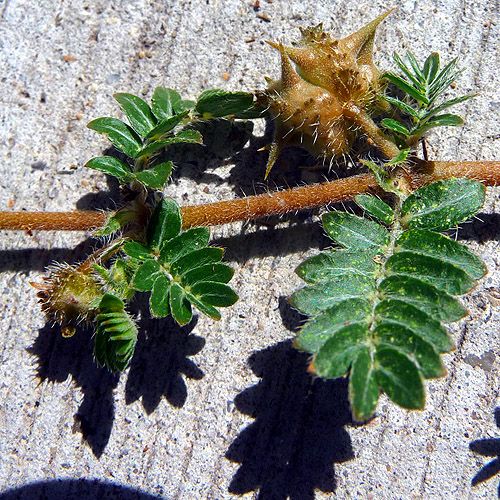Puncturevine (Goathead) – Tribulus Terrestris
Click here to download a Puncturevine Fact Sheet
Distinguishing Features:
- Flowers: Yellow, five petaled flowers, approximately½ inch in size.
- Seeds: A spiny bur, containing 5 seeds; Matures to a tan or grey and is very hard. 500 -2,000 seeds per plant that can remain viable in the soil for 4-5 years.
- Leaves: Small, hairy, opposite.
- Flowering Time: Mid summer. Germinates and goes to seed in 2 – 3 weeks.
- Life cycle/ other: Annual forming dense mats reaching 2-5 ft in diameter.
Impacts:
- The hard, spiky seed case can injure livestock, people, and pets when stepped on and can puncture bicycle and car tires.
- A problem in orchards, turf, pastures, and recreational trails.
Control:
- Long-term control of puncturevine can be achieved by consistently reducing the amount of seed in the soil. Burrs that have dropped after removing the plant may be collected and removed by sweeping or raking the ground.
- For small infestations of puncturevine in the home landscape and garden, the most effective management is removal of seedlings and older plants by digging or hoeing, taking care to also remove any burrs that fall off the plant.
- For larger infestations, there are few preemergent herbicides that are effective. Products containing oryzalin, benefin, or trifluralin will provide partial control of germinating seeds. Postemergence, products containing 2, 4-D, glyphosate, and dicamba are effective when applied when the plants are small.
- Biological control from two introduced weevils has been very effective in mild climates, but has failed to establish in Utah possibly because of our cold winters.


